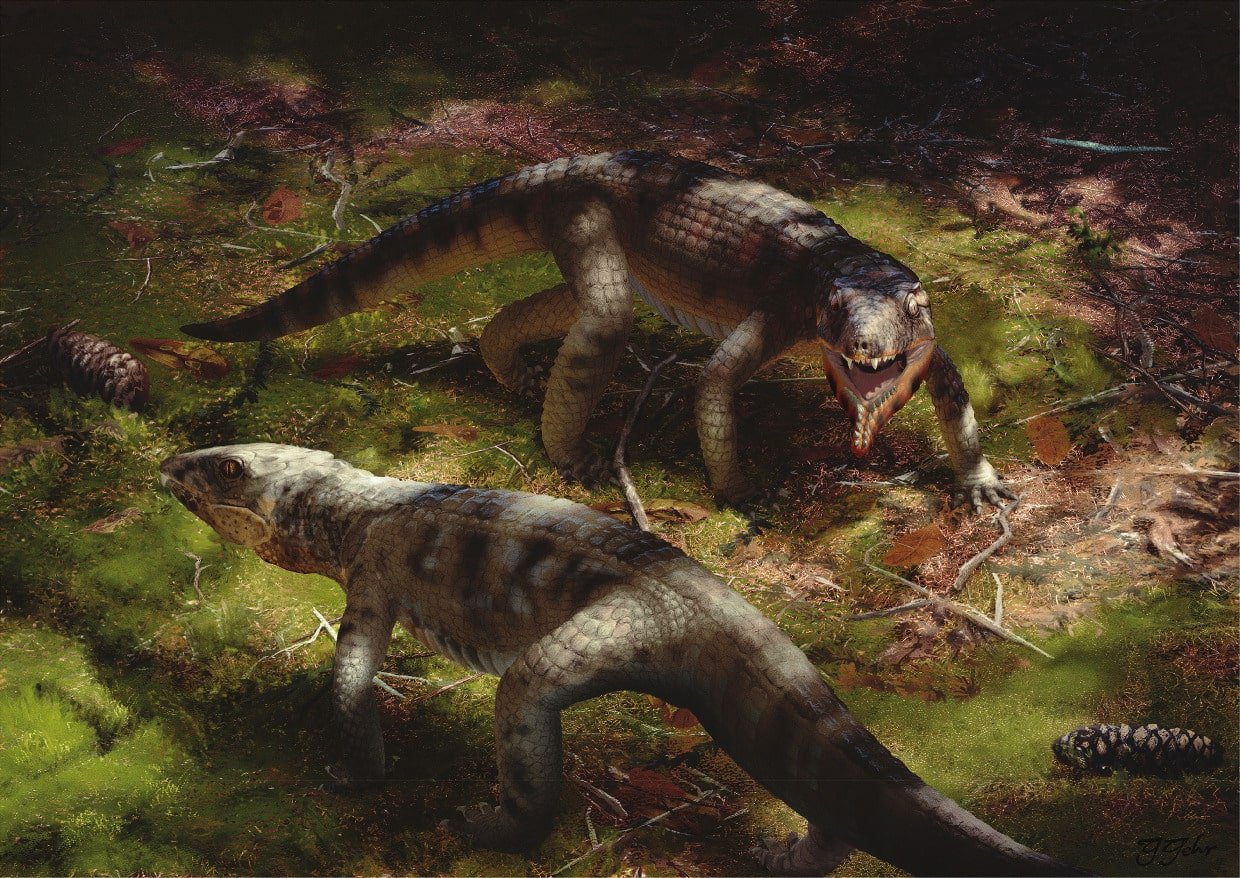Brazilian paleontologists have discovered a well-preserved skull of a new species of crocodile that lived in the late Cretaceous. Features of the structure of the skull indicate that this four-legged lizard was able to produce complex sounds and possibly communicate with its relatives.
The Mesozoic era (251-66 million years ago) is often called the age of dinosaurs because these animals dominated the land for 185 million years. However, at different periods, other equally diverse creatures lived with them. During the Cretaceous period, the last of the Mesozoic, the South American region formed after the breakup of Gondwana was inhabited by crocodiles – more precisely, some endemic species of this order.
His close relatives were the notosucians. Although these four-legged and tailed reptiles generally resemble the crocodiles we know, they are agile reptiles that live only on land. Judging by their dental systems, they ate everything from fruits to small game to insects.
A separate genus of sphagesaurids is distinguished – animals weighing as much as an adult shepherd dog, whose jaws have acquired common features with mammals. Until recently, five species were known to science Caipirasuchus (this is a family of sphagesaurids), a species the newest of which was discovered in 2021 and is named after the famous British naturalist David Attenborough.
The new species (sixth) was found in southern Brazil, not far from the city of Catanduwa. An almost complete skull, lower jaw, fragments of shoulder bones, fragments of cervical and caudal vertebrae and other fossils have been preserved from the ancient lizard. As researchers note, this is one of the oldest representatives of sphagesaurids. A description of the finding was published in the journal Historical Biology .
The crocodile shape found was named Caipirasuchus catanduvensis It is in honor of the Brazilian city of Catanduwa, where scientists discovered the ruins. The most likely date of the sandstone formation in which the new species was found is between the Campanian and Maastrichtian phases of the Late Cretaceous, that is, between 83.6 ± 0.2 and 72.1 ± 0.2 million years ago. It also appeared that, all things considered, the bones belonged to a young individual.
The open sight differs from its relatives in a number of features of the head, but the structure of the palate was the most interesting. Caipirasuchus catanduvensis and a complex air circulation system in the skull.
Paleontologists scanning the samples with CT scans discovered that the air channel connected the nasal cavity to chambers deep within the skull. This feature indicates the animal’s ability to produce complex sounds. After comparing the find with other lizards in which the nasal cavity is connected to the crest on the head, scientists concluded that they serve as acoustic resonators in the new crocodile lizard.
In addition, modern crocodiles emit a variety of sound signals designed for territory protection, grooming rituals, care of offspring, and other social interactions. It is possible that the found crocodile developed these abilities. This may indicate an advanced social organization of the species. However, additional examples are needed to follow such a development in detail.
Source: Port Altele
